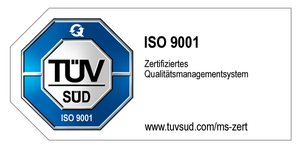Measurement fixture
A measuring device, or measurement fixture, is a specially designed tool used in industrial metrology to perform precise measurements on workpieces or components. Its purpose is to detect deviations or tolerance issues that may occur during the manufacturing process.
A measuring device consists of various components that may vary depending on the application and measurement task. Typical elements of a measuring device include:
- Clamping devices: These are used to securely and stably hold the workpiece being measured. Clamping devices can be pneumatic, hydraulic, or mechanical and are selected according to the shape and size of the workpiece.
- Reference surfaces: The measuring device has predefined reference surfaces or datum surfaces that serve as reference points for the measurements. These surfaces are precisely machined and known to ensure accurate and reliable measurement results.
- Measurement sensors: Depending on the type of measurement, different sensors may be integrated into the measuring device. These can include tactile sensors such as touch probes or non-contact sensors such as laser scanners or optical sensors. The sensors capture the relevant measurement data of the workpiece and transmit it to the measurement system.
- Measurement system: The measurement system consists of the hardware and software that capture, process, and analyze the measurement data. It can be a computerized measurement system that records and analyzes the data in real-time. The software enables visualization of the measurement results, statistical analysis, and report generation.
- Adjustment and alignment mechanisms: Some measuring devices have built-in adjustment and alignment mechanisms to ensure proper alignment and precise measurements. These mechanisms allow for fine-tuning of the positioning of the workpiece or sensors.
The measuring device is typically used in conjunction with other equipment such as coordinate measuring machines (CMMs), robots, or automated systems. It can be used for both offline measurement in a dedicated metrology laboratory and inline measurement directly in the production line.
The advantages of a measuring device lie in its ability to perform repeatable and accurate measurements to monitor and ensure the quality of manufactured workpieces. It enables the rapid identification of errors, deviations, or wear phenomena to initiate corrective measures in a timely manner and minimize scrap.
We find the perfect solution for your project.
Contact us if you have questions to our services in the area of 3D metrology. We are looking forward supporting you in your success.



